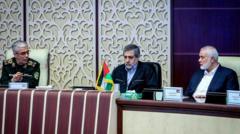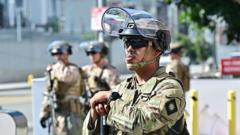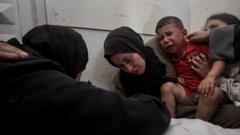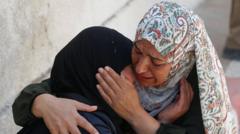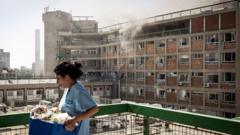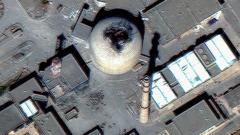This article explores a series of critical incidents, including military strikes, tragic civilian casualties, and emerging surveillance tactics in regions of ongoing tension, shedding light on the human cost of warfare and the intricate connections between military operations and civilian safety.
Unraveling the Consequences: Inside Current Global Conflicts

Unraveling the Consequences: Inside Current Global Conflicts
A comprehensive look at recent tragedies and military actions impacting civilians and the dynamics of global conflict.
In recent weeks, a series of incidents has highlighted the devastating impact of military conflict on civilians, underscoring the need for urgent attention to the human cost of war. Reports have emerged detailing the deaths of multiple rescue workers in Gaza, raising questions about operational transparency and accountability within militarized zones.
In another unfolding narrative, air disaster reports from D.C. indicate crowded skies and narrow margins for error, reminding the public of the precarious nature of air travel during times of heightened military engagement.
Meanwhile, videos titled "Trophy" have linked paramilitary commanders in Sudan to war crimes, prompting increased scrutiny of their actions and consequences. A separate incident illustrates how a single Gaza family fell victim to gunfire in their own neighborhood, highlighting the indiscriminate nature of violence in conflict zones.
Amid these harrowing accountabilities, the former U.S. President Donald Trump faced an assassination attempt, raising concerns regarding the security measures in place for high-profile political figures.
International aid organizations reveal that despite cooperation with the Israel Defense Forces (IDF), they too have come under fire, illustrating the complexities of delivering humanitarian aid in hostile environments.
Additionally, newly released IDF footage adds layers of confusion to the situation surrounding civilian casualties tied to designated safe zones, further complicating narratives surrounding military strikes. Visual evidence indicates that large munitions were deployed in areas where civilians were instructed to relocate for safety.
In Sderot, the tragic killing of dozens has spurred discussions about the implications of gunmen tactics during urban warfare. The Russian military's actions in Bucha, too, came under scrutiny as new video evidence tracks their involvement in civilian casualties.
Reports also highlight the final days of a Chinese doctor silenced by the regime, alongside alarming revelations about the growth of surveillance tactics within China's borders. In the U.S., the tumultuous events of January 6 at the Capitol are reinvestigated, alongside new evidence from intercepted Russian communications concerning military strategies regarding Ukraine.
This summary of current global conflicts and their anguish reveals the deep, interconnected threads of suffering experienced by civilians caught in the crossfires. As these events unfold, the imperative for diplomatic solutions and the protection of human rights has never been clearer, inviting renewed efforts both on the ground and in the international arena.

